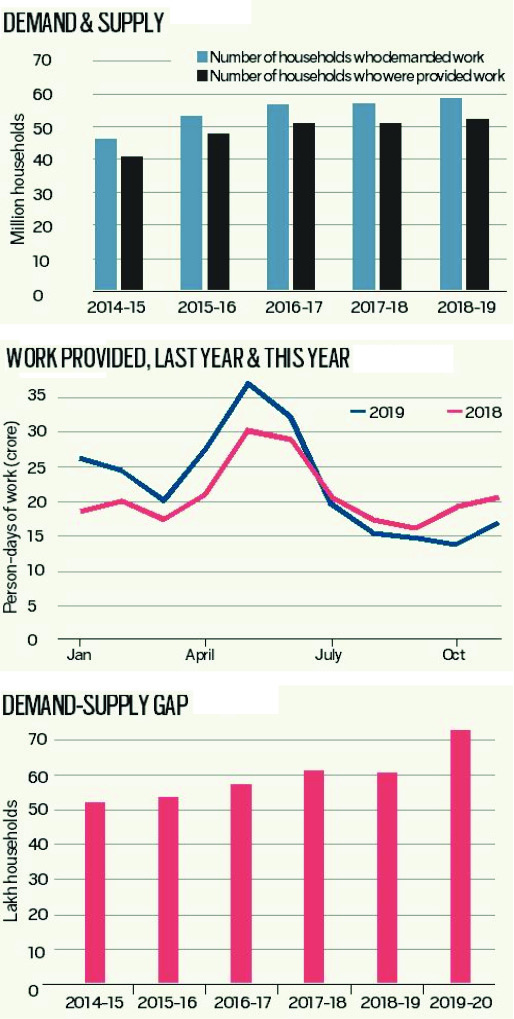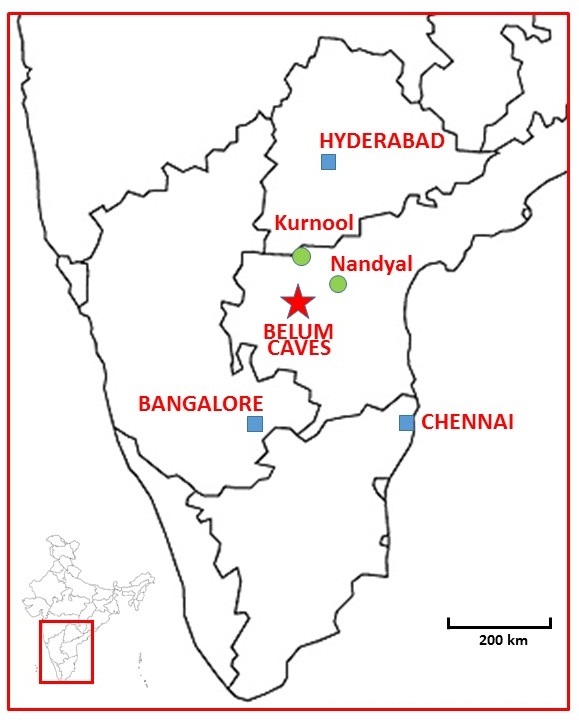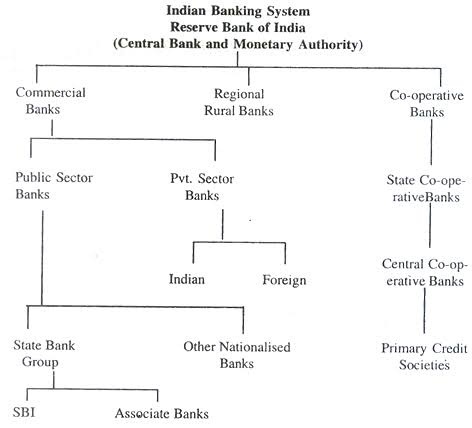Indian Economy
Financial Stability Report: RBI
Why in News
The Reserve Bank of India has released the 20th issue of the Financial Stability Report (FSR).
- The FSR reflects the collective assessment of the Sub-Committee of the Financial Stability and Development Council (FSDC) on risks to financial stability and the resilience of the financial system.
- The Report also discusses issues relating to development and regulation of the financial sector.
Key Points
- Credit Growth
- Bank credit is the total amount of funds a person or business can borrow from a bank.
- Scheduled Commercial Banks’ (SCBs) credit growth remained subdued at 8.7% year-on-year (y-o-y) in September 2019, down from 13.2% in March 2019.
- Private Sector Banks (PVBs) registered double digit credit growth of 16.5% in September 2019.
- Expected Increase in Gross Non-Performing Asset (GNPA) Ratio
- SCB’s Gross Non-Performing Asset (GNPA) ratio of banks may increase to 9.9% by September 2020 from 9.3% in September 2019.
- Public Sector Banks’ (PSB) GNPA ratios may increase to 13.2% by September 2020 from 12.7% in September 2019.
- For private banks, the ratio may climb to 4.2% from 3.9%, under the stress scenario.
- Foreign banks’ (FB) GNPA ratio may increase to 3.1% from 2.9% in September 2019.
- Non-Performing Asset
- Non-Performing Assets (NPA) refer to a classification for loans or advances that are in default or are in arrears on scheduled payments of principal or interest.
- In most cases, debt is classified as non-performing, when the loan payments have not been made for a minimum period of 90 days.
- Gross non-performing assets are the sum of all the loans that have been defaulted by the individuals who have acquired loans from the financial institution.
- Net non-performing assets are the amount that is realized after provision amount has been deducted from the gross non-performing assets.
- All banks’ Capital to Risk-weighted Assets Ratio (CRAR) improved to 15.1% in September 2019 from 14.3% in March 2019, following the recapitalisation of PSBs by the government.
- CRAR is a measurement of a bank's available capital expressed as a percentage of a bank's risk-weighted credit exposures. It is also known as the Capital Adequacy Ratio (CAR).
- CAR = (Tier 1 Capital + Tier 2 Capital)/Risk weighted Assets
- Tier-1 capital, or core capital, consists of equity capital, ordinary share capital, intangible assets and audited revenue reserves. Tier-1 capital is the capital that is permanently and easily available to cushion losses suffered by a bank without it being required to stop operating.
- Tier-2 capital comprises unaudited retained earnings, unaudited reserves and general loss reserves. This capital absorbs losses in the event of a company winding up or liquidating
- Provision Coverage Ratio (PCR) of all SCBs rose to 61.5% in September 2019 from 60.5% in March 2019 implying increased resilience of the banking sector.
- Provisioning Coverage Ratio (PCR) refers to the prescribed percentage of funds to be set aside by the banks for covering the prospective losses due to bad loans.
Way Forward
- The global economy confronted a number of uncertainties – a delay in the Brexit deal, trade tensions, oil-market disruptions and geopolitical risks – leading to significant deceleration in growth.
- As regards the domestic economy, aggregate demand slackened in second quarter of 2019-20 further extending the growth deceleration.
- Reviving the twin engines of consumption and investment while being vigilant about spillovers from global financial markets remains a critical challenge going forward.
Indian Economy
MGNREGA Trends
Why in News
- After July 2019, the number of jobs generated under the Mahatma Gandhi National Rural Employment Guarantee Act (MGNREGA) has gone down compared to 2018.
Key Points
- There has been a decrease in the number that were actually provided work out of the total number of households whose demand for work was registered by the gram panchayat authorities concerned. In 2018-19, demand was registered from 5.88 crore households, and 5.27 crore of them were provided work.
- The year 2019 has witnessed a dip in the person-days of employment under MGNREGA, which is visible after July.
- In the period before July 2019, the work provided exceeded the corresponding levels for 2018.
- The fall in MGNREGA employment after July has been largely due to the onset of the southwest monsoon.
- The gap between the number of households demanding MGNREGA work and the number who were provided work has been the highest in 2019-20. This indicates that even if demand fell, the supply of work fell even more.
Lack of Funds
- The cost of providing a day’s work to a single person has been taken at an average of ₹249.86 for 2019-20. For 270.21 crore people, the MGNREGA budget worked out to roughly ₹67,514.67 crore.
- But the total budgetary allocation has been only ₹60,000 crore, which also includes provision towards material and administrative expenses.
- Adding to the problem, ₹55,829.62 crore was already spent as on December 24, 2019.
- Apart from this, the Centre has revised upwards its original plan of providing 260 crore person-days of work for 2019-20 to 316.73 crore person-days.
- This move came after a decision to augment the number of days of employment per household under MGNREGA from 100 to 150 in flood-affected districts of states such as Karnataka.
Other Schemes Facing Similar Situations
- Pradhan Mantri Kisan Samman Nidhi (PM-KISAN)
- In the first instalment (December 2018 to March 2019), 8.05 crore farmers were covered, with each of them receiving ₹2,000. Those numbers fell to 7.43 crore in the second instalment (April-July 2019) and further to 5.91 crore in the third (August-November).
- In all, the total amount disbursed under the scheme for 2019-20 is ₹32,320.86 crore, which is significantly short of the ₹75,000 crore budgeted for it.
- Further, of the total ₹95,000 crore allocated for the scheme since its inception in 2018 ₹48,421.65 crore (roughly half of the total amount) has been spent up to December 2019.
- PM Awas Yojana-Gramin
- The number of rural houses built under the scheme has seen a drop to 7.2 lakh in 2019-20 from 47.33 lakh in 2018-19.
Important Facts For Prelims
SnowEx
Why in News
Recently, National Aeronautics and Space Administration (NASA) has launched a seasonal campaign to understand how much water is contained in each winter’s snowfall and how much will be available when it melts in the spring.
- This campaign is part of a five-year programme called SnowEx which was initiated in 2016-17.
Key Points
- The geographical focus of SnowEx is North America but NASA’s overall target is optimal strategies for mapping global snow water equivalent (SWE) with remote sensing and models leading to “Earth System Explorer” mission.
- NASA currently has no global satellite mission to track and study SWE.
- Snow is a vital source of water for drinking, agriculture and electrical power in the western United States and other locations around the world. To know how much water will be available the following spring, water resource managers and hydrologists need to know where snow has fallen, how much there is and how do characteristics change as it melts.
Remote sensing: It is the science of obtaining information about objects or areas from a distance, typically from aircraft or satellites.
Important Facts For Prelims
Annual Flamingo Festival at Pulicat Lake
Why in News
The annual Flamingo Festival is to be held in January at Pulicat lake.
- The Pulicat lake supports rich biodiversity and high biomass of fishes and planktons which is utilised as food resources by visiting birds. Thus about 75 aquatic and terrestrial bird species visit the sanctuary every year.
- The number of birds is much higher than usual due to abundant rains in 2019.
Pulicat Lake
- It is the second-largest brackish water ecosystem in the country after the Chilika Lake (Odisha).
- It is located on the border of Andhra Pradesh and Tamil Nadu. It lies majorly in Andhra Pradesh.
- The large varieties of birds like grey pelicans, painted storks, visit the site annually.
- Grey Pelican and Painted Stork both are near-threatened species under IUCN Red List of Threatened Species.
Important Facts For Prelims
Western Freight Corridor
Why in News
The Dedicated Freight Corridor Corporation of India Ltd. (DFCCIL) has opened more than 300-km section between Rewari (Haryana) to Madar (Rajasthan) for commercial trial runs. This is the first section to be opened on the under-construction western freight corridor.
- The 1,504-km western freight corridor begins at Dadri in Uttar Pradesh and stretches till the country’s largest container port — Jawaharlal Nehru Port Trust, near Mumbai — passing through Uttar Pradesh, Haryana, Rajasthan, Gujarat and Maharashtra.
- DFCCIL under Ministry of Railways is a special purpose vehicle tasked with planning and completion of 3,306 kms of Dedicated Freight Corridors (DFCs), consisting of western freight corridor and eastern freight corridor (1,856 kms). The total project cost is estimated at over ₹81,000 crore.
- The DFC corridor will run only freight trains.The construction of Western Dedicated Freight Corridor (DFC) project would enable the decongestion of existing over-saturated paths which, thereby, will effectively improving punctuality of passenger trains.
Important Facts For Prelims
Kalaripayattu
- Kalaripayattu is a martial art based on the ancient knowledge of the human body.
- It originated in Kerala during 3nd century BC to the 2nd century AD. It is now practised in Kerala and in some parts of Tamil Nadu.
- The place where this martial art is practised is called a 'Kalari'. It is a Malayalam word that signifies a kind of gymnasium. Kalari literally means 'threshing floor' or 'battlefield'. The word Kalari first appears in the Tamil Sangam literature to describe both a battlefield and combat arena.
- It is considered to be one of the oldest fighting systems in existence.
- It is also considered as the father of modern Kung - Fu.
Important Facts For Prelims
Belum Caves Festival
Why in News
Andhra Pradesh Government will be hosting the Belum Caves festival in January 2020 to popularise the Belum caves.
- The name ‘Kandanavolu Sambaralu’ has been proposed for the festival. Kandanavolu was the ancient name of Kurnool district.
Key Points
- Location: Belum Caves, also known as Belum Guhalu in Kurnool district of Andhra Pradesh is the second-longest cave in the Indian subcontinent open to the public.
- The longest natural cave in the Indian subcontinent is Krem Liat Prah caves in Meghalaya.
- Formation: The cave is more than a thousand year old, and was formed by the constant flow of underground water over a period of time.
- Geographical Features: These caves are renowned for their speleothem structures (Speleothems are secondary mineral deposits formed in a cave), such as stalactite and stalagmite formations.
- Historical Background: The caves were occupied by Jain and Buddhist monks many centuries ago. The presence of 4500 years old vessels from the pre-Buddhism era ensures the same.
Stalactites and Stalagmites
- Stalactites hang as icicles of different diameters. Normally they are broad at their bases and taper towards the free ends showing up in a variety of forms.
- Stalagmites rise up from the floor of the caves. In fact, stalagmites form due to dripping water from the surface or through the thin pipe, of the stalactite, immediately below it.
- The stalagmites and stalactites eventually fuse to give rise to columns and pillars of different diameters.
Important Facts For Prelims
National Institute of Mountaineering and Allied Sports
Why in News
A cycling expedition consisting of staff from the National Institute of Mountaineering and Allied Sports (NIMAS) reached Yangon (Myanmar) on 25th Dec 2019. It will be cycling through Myanmar, Thailand and Malaysia up to the Malaysia-Singapore border.
- Ministry of Defence is funding the expedition.
National Institute of Mountaineering and Allied Sports
- It is an advanced sports training institute located in the West Kameng district of Arunachal Pradesh.
- It operates under the control and superintendence of the Ministry of Defense.
- The institute offers training across land, air and water, a first of its kind that allows civilians to experience challenges across a variety of outdoor surfaces as well as pursue a career in adventure sports. It provides structured training to defence personnel as well.






